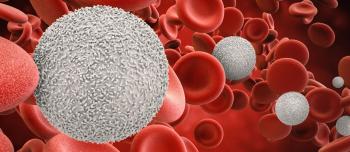Researchers from the University of North Carolina (UNC) at Chapel Hill School of Medicine have published a new study suggesting that genetic material known as heterochromatin performs a key role in disease suppression. The study, “Direct Interrogation of the Role of H3K9 in Metazoan Heterochromatin Function,” was published August 2016, in the journal Genes & Development. The new findings could have future therapeutic implications for conditions such as cancer and hemophilia.
Heterochromatin represents one of two distinct groupings of DNA found within cells known as chromatin. Loosely-packed euchromatin carries out several important functions, including the efficient packaging of DNA so that it fits into the nucleus of a cell. In contrast, heterochromatin is densely packed and relatively inactive. Both are found in chromosomes, the thread-like structures located inside the nucleus of all animal and plant cells. DNA, which when passed from parents to offspring, carries with it the specific genetic instructions that account for an individual’s unique hereditary traits.
While scientists have generally assumed that heterochromatin is responsible for controlling gene expression and cell proliferation, UNC investigators may have assigned it some newfound relevance. Using Drosophila fruit flies they demonstrated that heterochromatin actually works to suppress the activity of transposons, or “jumping genes,” a notable finding as these genes have the capacity to replicate and paste copies throughout the genome. By inserting themselves into certain key genes, transposons can cause adverse cellular changes such as disrupting tumor-suppressing genes or fragmenting DNA to destabilize the chromosome. These and other molecular level changes have been associated with several conditions, such as cancer and hemophilia.
Lead investigator Robert Duronio, PhD, and his colleagues also discovered that heterochromatin form when a protein called histone H3 is chemically modified or “methylated,” a theory tested in the Drosophila fruit flies. The researchers subsequently observed a 98% mortality rate amongst the flies, which had their working H3 genes replaced with a mutant form, which allowed the transposons to infiltrate important genes. The finding is significant as it suggests that by removing working H3 genes, investigators also eliminated the flies’ ability to produce heterochromatin and its critical jumping gene suppressing function.
“It seems that the major role for the methylation of histone H3 that triggers this type of heterochromatin is to keep transposons from jumping around and screwing up the genome,” explained Duronio.
The UNC team plans to conduct additional research to further their understanding of the biological relationship between transposons, heterochromatins and the genome. “During embryonic and fetal development, there is normally a high-fidelity replication of the genome, and that is a significant mechanism for repressing cancer and other diseases,” concluded Duronio. “With studies like these, we’re understanding how heterochromatin does its job in that respect.”
Source: Science Daily, September 1, 2016





